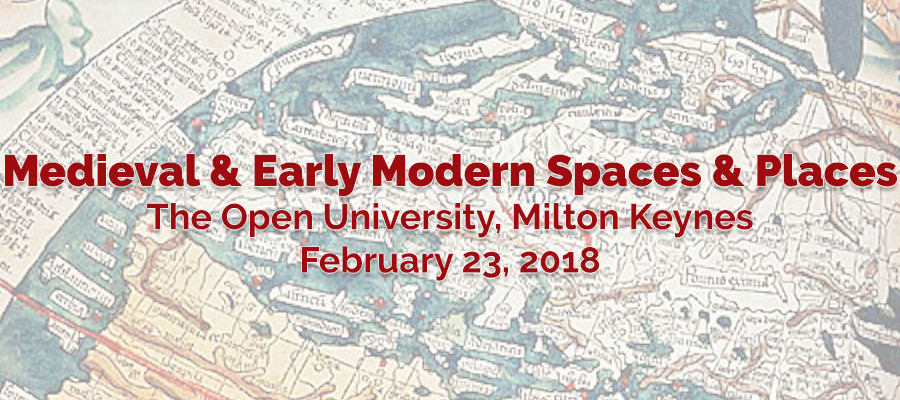Medieval and Early Modern Spaces and Places, The Open University, Milton Keynes, February 23, 2018
Drawing upon the research interests of the Medieval and Early Modern Research Group at the Open University we will be hosting an annual research day on the theme of spaces and places, examining life in buildings, institutions and broader geographical areas from a variety of perspectives.
Theoretical approaches have informed new ways of thinking about the social production of space (from Henri Lefebvre to David Harvey) and recent research networks have also stimulated novel approaches to early modern spaces (PALATIUM). Early Modern spaces were mutable and permeable, and new technologies, objects, and social formations played a role in defining spaces as well as identities. The expansion of trade routes and economic networks, the development of the printing press, struggles for territorial power and religious wars, and new diplomatic frameworks, all contributed to new ways of conceptualising geographies and spaces.
Our network will build on previous approaches and seek to answer two main questions: How were medieval and early modern spaces adapted and transformed through the movement of material and immaterial things? To what extent did an individual’s sense of place depend upon the activities taking place there and how in turn did these create new social groups and identities?
This annual conference is fundamentally interdisciplinary: literary, musical, architectural, artistic, and religious spaces, will be the subjects of enquiry not as discrete or separate entities, but ones which overlapped, came into contact with one another, and at times were in conflict. The creation of boundaries and demarcations in subsequent centuries was often a result of these early approaches to spaces.
The conference will examine life in buildings, institutions and broader geographical areas from a variety of perspectives and will consider the following questions:
- How were medieval and early modern spaces adapted and transformed through the movement of material and immaterial things?
- Which particular aspects of political, social and economic infrastructures enabled the exchange of objects and ideas?
- To what extent did a sense of place depend upon the activities taking place there?
